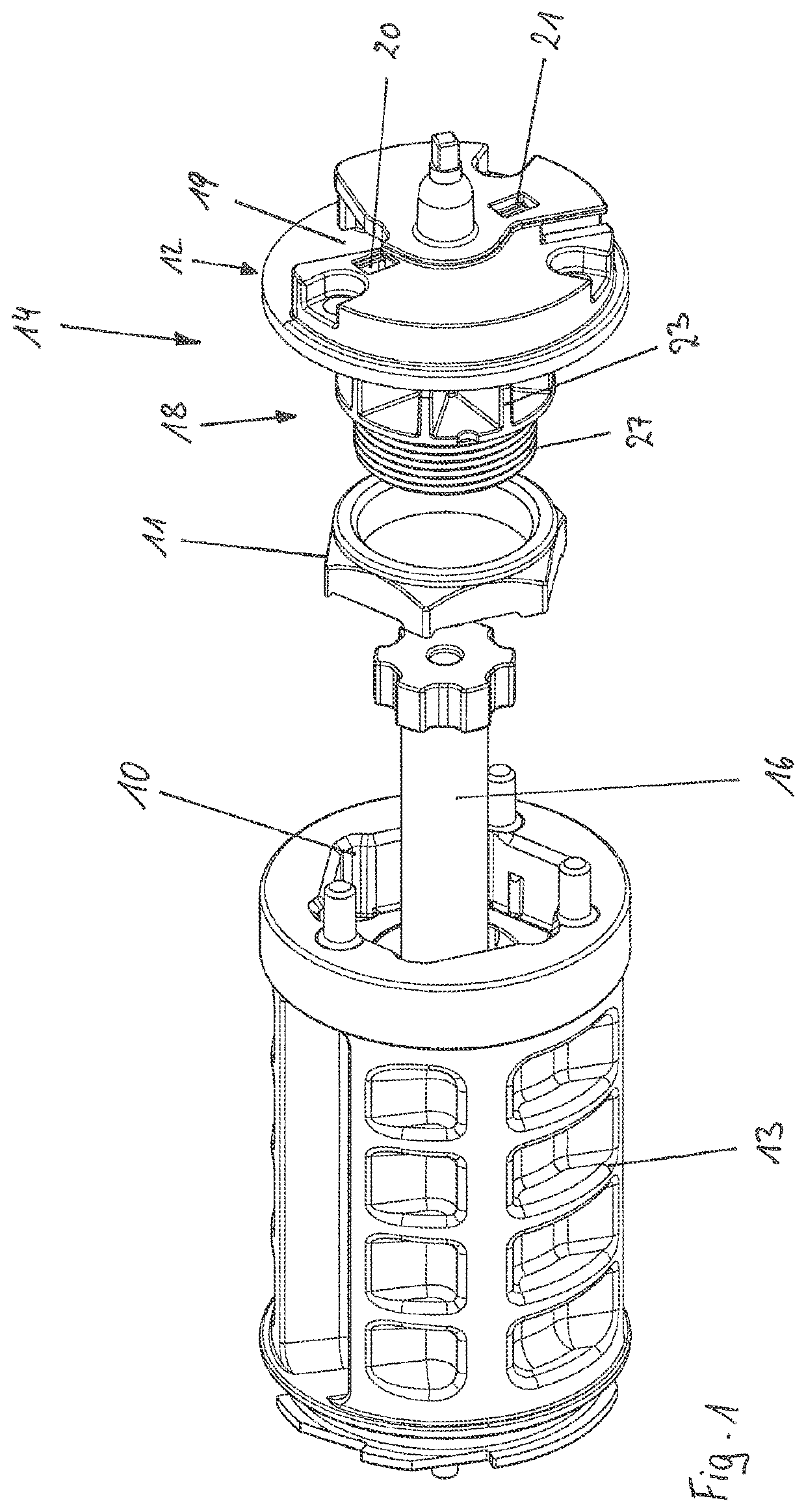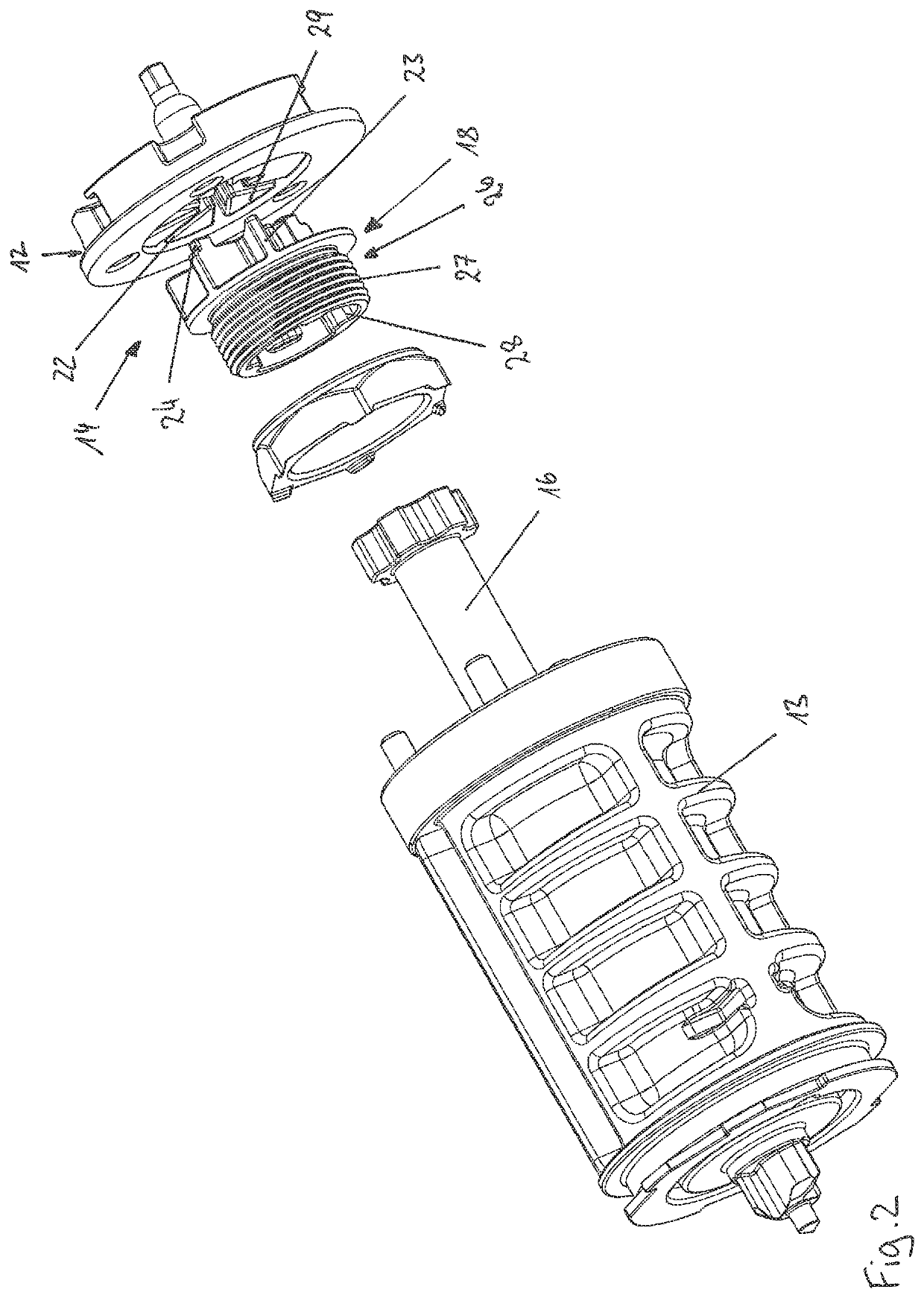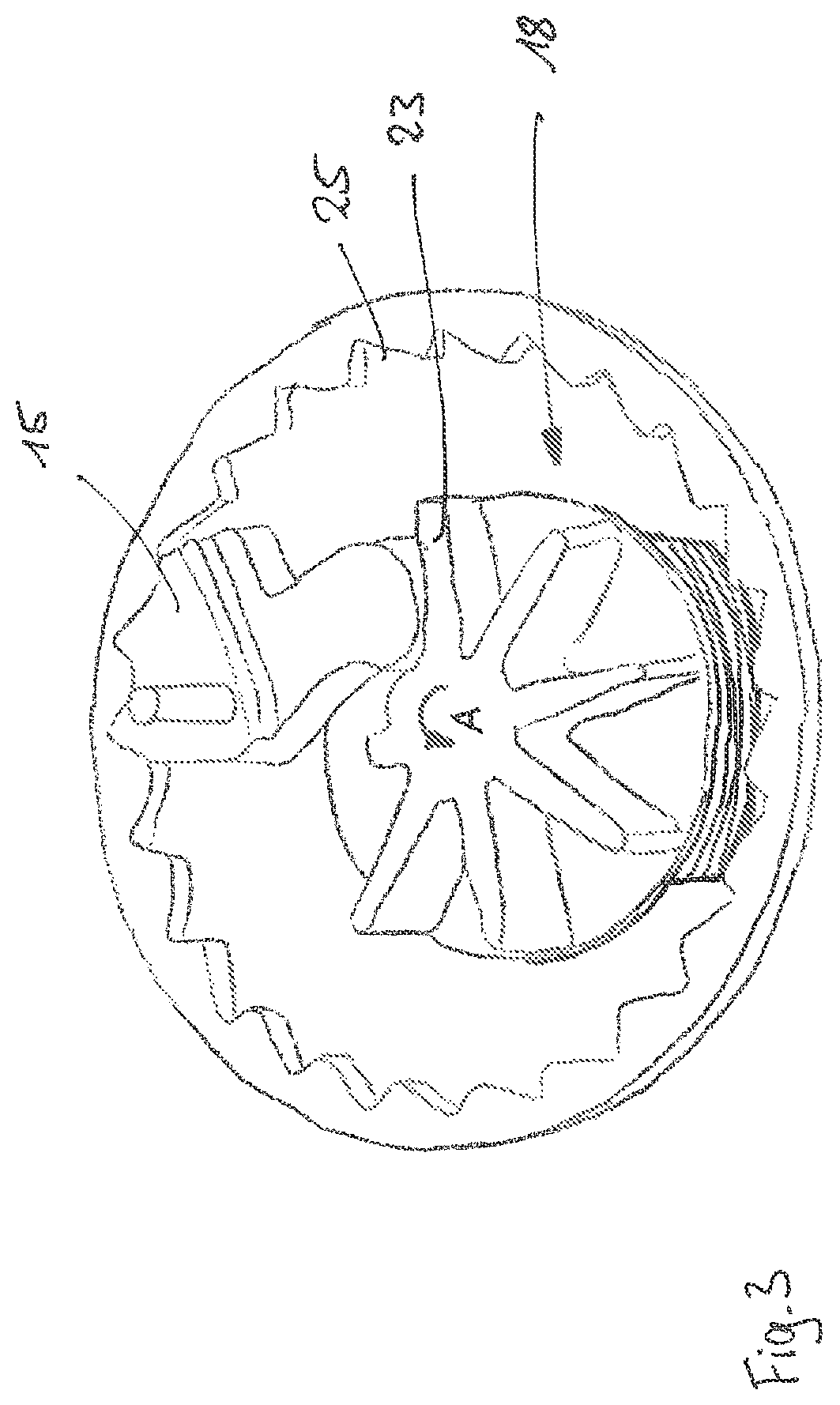Self-locking belt retractor for a seat belt device of a motor vehicle
a technology of self-locking belt and seat belt, which is applied in the direction of belt retractors, vehicle safety belts, vehicle components, etc., can solve the problem that the load on the associated seat belt can exceed the set load limit, and achieve the effect of reducing serious injuries
- Summary
- Abstract
- Description
- Claims
- Application Information
AI Technical Summary
Benefits of technology
Problems solved by technology
Method used
Image
Examples
Embodiment Construction
[0026]In FIGS. 1 and 2 respectively, a self-locking belt retractor according to the invention can be seen in various views in exploded view. The belt retractor includes a U-shaped frame (not shown) with two opposing legs, in each of which an opening is provided. The belt retractor is affixed to the vehicle via the frame, either onto the vehicle structure or on a vehicle seat. Furthermore, the belt retractor includes a belt shaft body 13, a profile head 14, and a torsion bar 16, which is mounted in the openings of the legs of the frame. The belt shaft body 13 serves to wind up a seat belt, while a first recess 19 is provided on the profile head 14, in which a blocking catch, only seen in FIG. 3, is mounted such that it can swivel. The torsion bar 16 is non-rotatably connected on a first end with the belt shaft body 13 and on a second end with the profile head 14 and forms a force-limiting device which will be subsequently described in greater detail.
[0027]The blocking catch 15 is par...
PUM
 Login to View More
Login to View More Abstract
Description
Claims
Application Information
 Login to View More
Login to View More - R&D
- Intellectual Property
- Life Sciences
- Materials
- Tech Scout
- Unparalleled Data Quality
- Higher Quality Content
- 60% Fewer Hallucinations
Browse by: Latest US Patents, China's latest patents, Technical Efficacy Thesaurus, Application Domain, Technology Topic, Popular Technical Reports.
© 2025 PatSnap. All rights reserved.Legal|Privacy policy|Modern Slavery Act Transparency Statement|Sitemap|About US| Contact US: help@patsnap.com



